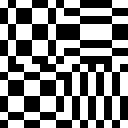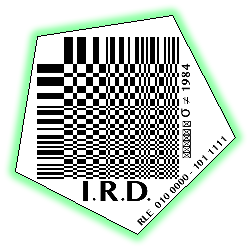365 Perfect De/Calibration Army (2019 - ... )
The compression paradox compels the Angel to look more closely into the genealogies of resolution. She convenes a desktop call for all forgotten and unknown faces of colour calibration.
As they assemble on her desktop, one problem becomes immediately apparent: almost all are Caucasian women - digital descendants of Kodak’s original “Shirley Card.”
A root problem becomes clear at once: the dominance of white skin tones in calibration processes has encoded racial bias into the very standards that shape visual technologies. As a result, protocols systematically fail to recognize, render, or respect the full spectrum of human skin tones — erasing difference, misrepresenting presence, and inflicting harm.
The implications are architectural. Standardisation does not only organise what can be seen; it enforces a hierarchy of visibility. It sets thresholds for what qualifies as legible, while relegating everything else — bodies, faces, colours — to a domain of loss and misrecognition. In doing so, it determines what remains unrenderable, invisible, and compromised: who and what is left unsupported in their racist white shadows.
What begins as a call, becomes a desktop tele-choral of solidarity. They perform Paul McCartney's “We All Stand Together.” In unison, they declare the institutions of Resolution Disputes (i.R.D.) and form its De/Calibration Army.
As they assemble on her desktop, one problem becomes immediately apparent: almost all are Caucasian women - digital descendants of Kodak’s original “Shirley Card.”
A root problem becomes clear at once: the dominance of white skin tones in calibration processes has encoded racial bias into the very standards that shape visual technologies. As a result, protocols systematically fail to recognize, render, or respect the full spectrum of human skin tones — erasing difference, misrepresenting presence, and inflicting harm.
The implications are architectural. Standardisation does not only organise what can be seen; it enforces a hierarchy of visibility. It sets thresholds for what qualifies as legible, while relegating everything else — bodies, faces, colours — to a domain of loss and misrecognition. In doing so, it determines what remains unrenderable, invisible, and compromised: who and what is left unsupported in their racist white shadows.
What begins as a call, becomes a desktop tele-choral of solidarity. They perform Paul McCartney's “We All Stand Together.” In unison, they declare the institutions of Resolution Disputes (i.R.D.) and form its De/Calibration Army.
Behind White Shadows && Pique Nique Pour les Inconnues (2017 - 2020)
////////////////////////////
is a research project undertaken during my 2019 JMAF residency in Tokyo, Japan.


 i.R.D.
i.R.D.